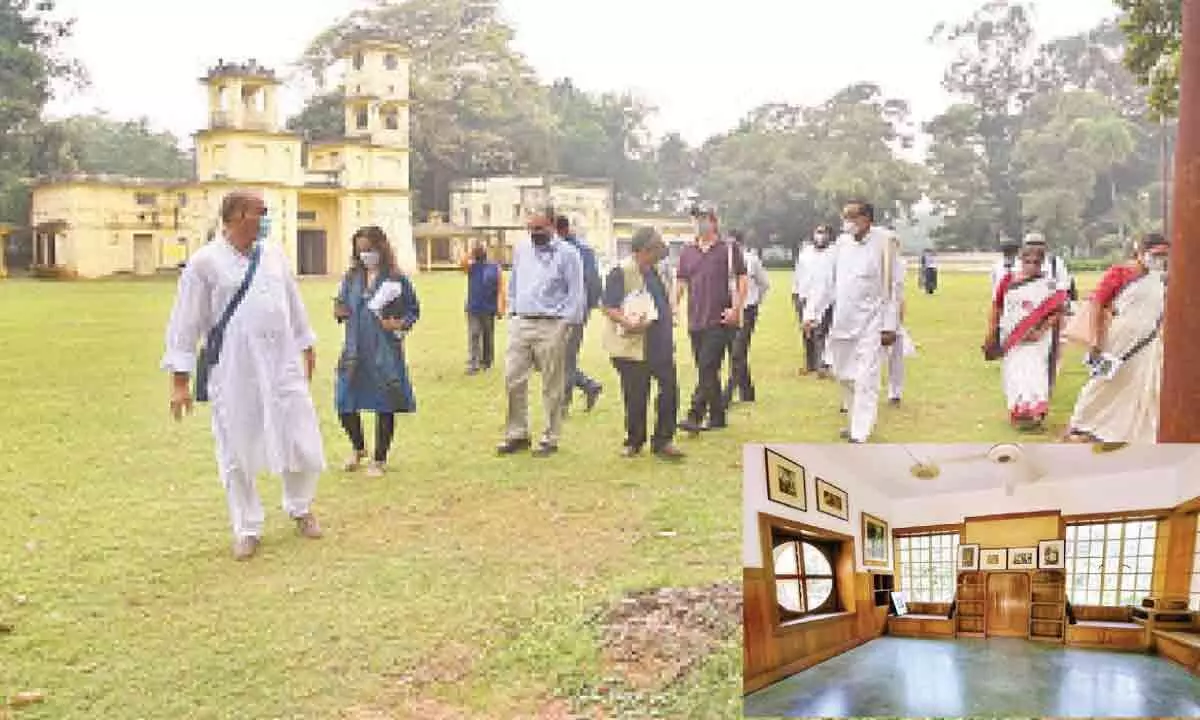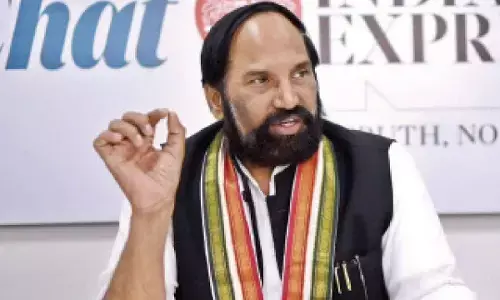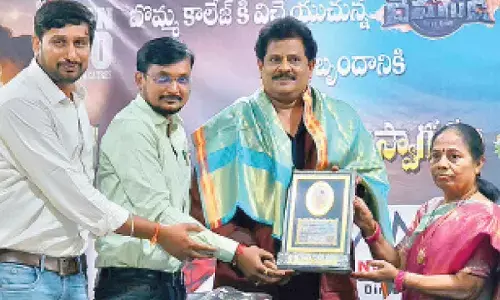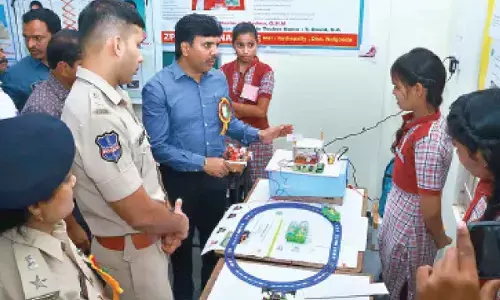Shantiniketan: Leaving Behind a Cultural and Educational Legacy

Shantiniketan, a small town in the Indian state of West Bengal, is historically and educationally significant.
Shantiniketan, a small town in the Indian state of West Bengal, is historically and educationally significant. The place is known for a school and later expanded and upgraded to an University. It was later renamed as Visva-Bharati and now recognized as UNESCO’s World Heritage Site for its exceptional role in advancing international understanding through education and cultural exchange. This acknowledgment is not only a monument to the town’s rich history and traditions but also highlights its relevance and value for the new generation.
Legacy of Educational Innovation
Educator and Nobel Prize winner in literature Rabindranath Tagore had a profound impact on the legacy of Shantiniketan. Tagore believed that education should focus on the development of the whole person, encouraging not only academic excellence but also a deep appreciation for nature and cultural heritage. Visva-Bharati was founded in 1901 as an educational centre with the goal of bringing together Eastern and Western perspectives on education.
Students and academics from all over the world were drawn to the peaceful town of Shantiniketan by Visva-Bharati because of its innovative approach to higher education. The school was an early innovator in the field of alternative education because to its concentration on experiential learning, cross-cultural understanding, and individual development.
Prof. Anil Kumar, Dept. Of ATHC & Archaeology, says, “Santiniketan continues to stand as a beacon of intercultural dialogue and artistic expression, nurturing the spirit of innovation and harmony. It remains a testament to Rabindranath Tagore’s vision of an abode where the world makes its home in a single nest, resonating with the timeless pursuit of knowledge and unity in diversity.”
A Haven for Cultural Harmony
The cultural landscape of Shantiniketan reflects the city’s history and Tagore’s ideas. The town offers several cultural festivals and events throughout the year, showcasing the diverse traditions of Bengal and India. There is a wide variety of opportunities for artistic and cultural expression and exchange at Shantiniketan, from dance and music shows to literary events and art exhibitions.
Tagore’s devotion to religious tolerance and his confidence in the inherent goodness of all people permeate every aspect of Shantiniketan’s culture. Musicians and artists from all walks of life gather each year for the town’s annual Baul Mela, a celebration of Baul music that serves to bring the community closer together through a common love of music and a shared spirituality.
Modern-day applicability
Shantiniketan’s legacy has great significance for the current generation in this age of globalisation and rapid technical breakthroughs. Lessons on how to deal with the problems of the twenty-first century can be gleaned from the town’s emphasis on holistic education, cultural harmony, and sustainable living.
Shantiniketan is a shining example to the younger generation of the value of education, respect for other cultures, and concern for the environment. A more just, egalitarian, and peaceful world can be formed using the town’s history and Tagore’s timeless philosophy.
Tagore’s contribution
Shantiniketan, a UNESCO World Heritage Site, is a testament to the town’s commitment to education, cultural harmony, and sustainable living. The town’s transformation from a village to a UNESCO World Heritage Site highlights its permanence and relevance for the next generation. Shantiniketan’s dedication to education, cultural understanding, and environmental respect inspires us to use these principles to improve the future. Tagore’s imaginative education approach shaped Indian education, emphasizing holistic development, integration of Eastern and Western education, critical thinking, self-discovery, and the role of nature and culture in education. He championed open-air classes, incorporated Indian culture and spirituality into the curriculum, and nurtured creative expression through various art forms. Tagore’s vision of education for global citizenship aimed to foster understanding between diverse cultures. Visva-Bharati, founded in Shantiniketan, attracted students and scholars from around the world, creating a vibrant atmosphere of cross-cultural exchange and intellectual discourse. His ideas inspired educational reforms throughout India, shaping the curriculum, pedagogy, and ethos of schools and universities.
Contribution of Nandalal Bose
Nandalal Bose, a pioneer of modern Indian art, was the principal of Kala Bhavana, the art school at Visva-Bharati, from 1921 to 1956. His teaching methods were based on creativity, self-expression, and respect for tradition, encouraging students to experiment with different art forms and find their unique voice. Bose’s leadership established Kala Bhavana as a leading center for art education in India, producing a generation of talented artists who made significant contributions to Indian art and culture.
Bose’s legacy continues to inspire artists and educators worldwide. His work at Shantiniketan shaped the course of modern Indian art and culture by introducing a new curriculum emphasizing creativity, self-expression, and respect for tradition. He established a museum to house the works of students and faculty, organized exhibitions and workshops, and invited renowned artists from around the world to teach and exhibit at the institution. His vision of art education as a means of personal growth and cultural enrichment continues to inspire students and faculty at Visva-Bharati today.
Architecture
Along with intangible heritage, Shantiniketan has a unique architecture, monumental arts, landscape reflecting the aesthetic Pan Asianism. The design of Ghantatala evokes Japanese Shrines, Udayana recalls Buddhist caves, Patha Bhavan of Ajanta architecture and so on. Around 36 hectares of the campus which is having the exclusive artistic expressions is restored and protected.
(The writer is an Assistant Director, Telangana State)















